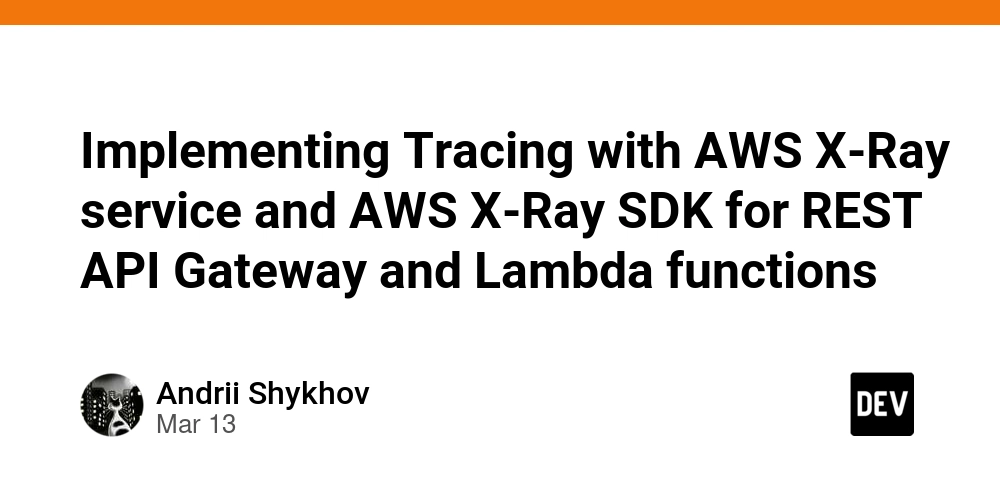Designing a successful Application Security program: Strategies, Tips and the right tools to achieve optimal results
The complexity of contemporary software development necessitates an extensive, multi-faceted approach to security of applications (AppSec) that goes beyond the simple scanning of vulnerabilities and remediation. A holistic, proactive approach is required to incorporate security seamlessly into all phases of development. The constantly changing threat landscape as well as the growing complexity of software architectures have prompted the need for a proactive and holistic approach. This comprehensive guide will help you understand the most important components, best practices and cutting-edge technologies that underpin the highly efficient AppSec program that empowers organizations to protect their software assets, limit the risk of cyberattacks, and build the culture of security-first development. https://www.youtube.com/watch?v=vZ5sLwtJmcU At the heart of a successful AppSec program lies a fundamental shift in mindset which sees security as a crucial part of the process of development, rather than an afterthought or separate undertaking. This paradigm shift requires close cooperation between security, developers operations, and the rest of the personnel. It breaks down silos and fosters a sense shared responsibility, and promotes an approach that is collaborative to the security of the applications they create, deploy, or maintain. DevSecOps helps organizations integrate security into their process of development. This ensures that security is considered throughout the entire process, from ideation, design, and deployment through to regular maintenance. This collaboration approach is based on the development of security standards and guidelines, which provide a framework to secure programming, threat modeling and vulnerability management. These policies should be based on industry-standard practices, like the OWASP Top Ten, NIST guidelines, as well as the CWE (Common Weakness Enumeration) in addition to taking into account the particular requirements and risk profile of each organization's particular applications and business environment. By formulating these policies and making them readily accessible to all parties, organizations can ensure a consistent, secure approach across their entire portfolio of applications. To make these policies operational and make them relevant to the development team, it is important to invest in thorough security training and education programs. The goal of these initiatives is to equip developers with knowledge and skills necessary to write secure code, identify potential vulnerabilities, and adopt best practices for security during the process of development. The course should cover a wide range of subjects, such as secure coding and the most common attack vectors, as well as threat modeling and safe architectural design principles. Organizations can build a solid base for AppSec by creating an environment that promotes continual learning, and by providing developers the tools and resources they require to incorporate security in their work. Organizations should implement security testing and verification procedures and also provide training to spot and fix vulnerabilities prior to exploiting them. This requires a multilayered method that combines static and dynamic analysis techniques along with manual code reviews and penetration testing. Static Application Security Testing (SAST) tools can be used to study the source code of a program and to discover possible vulnerabilities, like SQL injection cross-site scripting (XSS) as well as buffer overflows, early in the development process. Dynamic Application Security Testing (DAST) tools can, on the contrary are able to simulate attacks against running applications, while detecting vulnerabilities that are not detectable using static analysis on its own. While these automated testing tools are vital to detect potential vulnerabilities on a the scale they aren't a silver bullet. Manual penetration tests and code reviews conducted by experienced security experts are essential for uncovering more complex, business logic-related weaknesses that automated tools could miss. Combining automated testing and manual validation enables organizations to have a thorough understanding of their application's security position. They can also prioritize remediation strategies based on the magnitude and impact of the vulnerabilities. Businesses should take advantage of the latest technologies like machine learning and artificial intelligence to enhance their capabilities for security testing and vulnerability assessments. AI-powered tools can analyse huge quantities of application and code information, identifying patterns and irregularities that could indicate security concerns. These tools also help improve their detection and prevention of emerging threats by learning from previous vulnerabilities and attack patterns. Code property graphs could be a valuable AI application for AppSec. They can be used to identify and repair vu

The complexity of contemporary software development necessitates an extensive, multi-faceted approach to security of applications (AppSec) that goes beyond the simple scanning of vulnerabilities and remediation. A holistic, proactive approach is required to incorporate security seamlessly into all phases of development. The constantly changing threat landscape as well as the growing complexity of software architectures have prompted the need for a proactive and holistic approach. This comprehensive guide will help you understand the most important components, best practices and cutting-edge technologies that underpin the highly efficient AppSec program that empowers organizations to protect their software assets, limit the risk of cyberattacks, and build the culture of security-first development.
https://www.youtube.com/watch?v=vZ5sLwtJmcU At the heart of a successful AppSec program lies a fundamental shift in mindset which sees security as a crucial part of the process of development, rather than an afterthought or separate undertaking. This paradigm shift requires close cooperation between security, developers operations, and the rest of the personnel. It breaks down silos and fosters a sense shared responsibility, and promotes an approach that is collaborative to the security of the applications they create, deploy, or maintain. DevSecOps helps organizations integrate security into their process of development. This ensures that security is considered throughout the entire process, from ideation, design, and deployment through to regular maintenance.
This collaboration approach is based on the development of security standards and guidelines, which provide a framework to secure programming, threat modeling and vulnerability management. These policies should be based on industry-standard practices, like the OWASP Top Ten, NIST guidelines, as well as the CWE (Common Weakness Enumeration) in addition to taking into account the particular requirements and risk profile of each organization's particular applications and business environment. By formulating these policies and making them readily accessible to all parties, organizations can ensure a consistent, secure approach across their entire portfolio of applications.
To make these policies operational and make them relevant to the development team, it is important to invest in thorough security training and education programs. The goal of these initiatives is to equip developers with knowledge and skills necessary to write secure code, identify potential vulnerabilities, and adopt best practices for security during the process of development. The course should cover a wide range of subjects, such as secure coding and the most common attack vectors, as well as threat modeling and safe architectural design principles. Organizations can build a solid base for AppSec by creating an environment that promotes continual learning, and by providing developers the tools and resources they require to incorporate security in their work.
Organizations should implement security testing and verification procedures and also provide training to spot and fix vulnerabilities prior to exploiting them. This requires a multilayered method that combines static and dynamic analysis techniques along with manual code reviews and penetration testing. Static Application Security Testing (SAST) tools can be used to study the source code of a program and to discover possible vulnerabilities, like SQL injection cross-site scripting (XSS) as well as buffer overflows, early in the development process. Dynamic Application Security Testing (DAST) tools can, on the contrary are able to simulate attacks against running applications, while detecting vulnerabilities that are not detectable using static analysis on its own.
While these automated testing tools are vital to detect potential vulnerabilities on a the scale they aren't a silver bullet. Manual penetration tests and code reviews conducted by experienced security experts are essential for uncovering more complex, business logic-related weaknesses that automated tools could miss. Combining automated testing and manual validation enables organizations to have a thorough understanding of their application's security position. They can also prioritize remediation strategies based on the magnitude and impact of the vulnerabilities.
Businesses should take advantage of the latest technologies like machine learning and artificial intelligence to enhance their capabilities for security testing and vulnerability assessments. AI-powered tools can analyse huge quantities of application and code information, identifying patterns and irregularities that could indicate security concerns. These tools also help improve their detection and prevention of emerging threats by learning from previous vulnerabilities and attack patterns.
Code property graphs could be a valuable AI application for AppSec. They can be used to identify and repair vulnerabilities more precisely and effectively. CPGs are a detailed representation of an application’s codebase that not only shows the syntactic structure of the application but additionally complex dependencies and relationships between components. AI-driven tools that utilize CPGs can perform a deep, context-aware analysis of the security of an application, and identify security vulnerabilities that may be missed by traditional static analysis.
Furthermore, CPGs can enable automated vulnerability remediation by making use of AI-powered repair and transformation methods. AI algorithms are able to provide targeted, contextual fixes through analyzing the semantic structure and nature of the vulnerabilities they find. This allows them to address the root cause of an issue rather than treating the symptoms. This approach not only accelerates the remediation process, but also lowers the chance of creating new weaknesses or breaking existing functionality.
Integration of security testing and validating in the continuous integration/continuous deployment (CI/CD), pipeline is another key element of a highly effective AppSec. Automating security checks and making them part of the build and deployment process allows organizations to detect vulnerabilities early on and prevent them from affecting production environments. This shift-left approach to security allows for more efficient feedback loops, which reduces the amount of time and effort required to detect and correct problems.
To attain this level of integration enterprises must invest in most appropriate tools and infrastructure to support their AppSec program. This includes not only the security testing tools themselves but also the platform and frameworks that allow seamless automation and integration. Containerization technologies like Docker and Kubernetes play a significant role in this regard, because they offer a reliable and consistent setting for testing security and isolating vulnerable components.
In addition to the technical tools efficient tools for communication and collaboration can be crucial in fostering an environment of security and allow teams of all kinds to work together effectively. Issue tracking systems like Jira or GitLab can assist teams to prioritize and manage security vulnerabilities. Chat and messaging tools such as Slack or Microsoft Teams can facilitate real-time collaboration and sharing of information between security experts and development teams.
The achievement of an AppSec program isn't just dependent on the software and tools employed as well as the people who work with the program. Building a strong, security-focused culture requires leadership buy-in as well as clear communication and the commitment to continual improvement. The right environment for organizations can be created that makes security more than a tool to check, but rather an integral component of the development process by encouraging a shared sense of accountability as well as encouraging collaboration and dialogue offering resources and support and promoting a belief that security is a shared responsibility.
In order for their AppSec program to stay effective in the long run organisations must develop meaningful metrics and key-performance indicators (KPIs). These KPIs will help them track their progress and pinpoint improvement areas. These metrics should span the entire application lifecycle including the amount of vulnerabilities identified in the development phase to the time required to fix issues and the overall security of the application in production. By regularly monitoring and reporting on these metrics, businesses can demonstrate the value of their AppSec investments, identify patterns and trends, and make data-driven decisions regarding where to concentrate their efforts.
In addition, organizations should engage in continuous education and training efforts to keep pace with the constantly evolving threat landscape as well as emerging best practices. Attending industry conferences, taking part in online training, or collaborating with security experts and researchers from outside can allow you to stay informed on the latest trends. Through fostering a continuous training culture, organizations will assure that their AppSec program is able to be adapted and resistant to the new challenges and threats.
Finally, it is crucial to be aware that app security is not a one-time effort but a continuous process that requires a constant dedication and investments. Companies must continually review their AppSec strategy to ensure it remains relevant and affixed to their business objectives as new technology and development practices are developed. By adopting a continuous improvement mindset, promoting collaboration and communications, and making use of advanced technologies like CPGs and AI companies can develop an efficient and flexible AppSec program that will not only protect their software assets but also allow them to be innovative in an increasingly challenging digital environment.https://www.youtube.com/watch?v=vZ5sLwtJmcU










































































































































































![[The AI Show Episode 142]: ChatGPT’s New Image Generator, Studio Ghibli Craze and Backlash, Gemini 2.5, OpenAI Academy, 4o Updates, Vibe Marketing & xAI Acquires X](https://www.marketingaiinstitute.com/hubfs/ep%20142%20cover.png)



























































































































![[FREE EBOOKS] The Kubernetes Bible, The Ultimate Linux Shell Scripting Guide & Four More Best Selling Titles](https://www.javacodegeeks.com/wp-content/uploads/2012/12/jcg-logo.jpg)



![From drop-out to software architect with Jason Lengstorf [Podcast #167]](https://cdn.hashnode.com/res/hashnode/image/upload/v1743796461357/f3d19cd7-e6f5-4d7c-8bfc-eb974bc8da68.png?#)






































































































.png?#)




.jpg?#)































_Christophe_Coat_Alamy.jpg?#)








































































































![Rapidus in Talks With Apple as It Accelerates Toward 2nm Chip Production [Report]](https://www.iclarified.com/images/news/96937/96937/96937-640.jpg)









































































































































